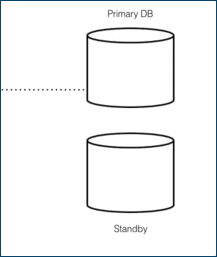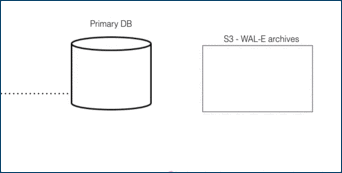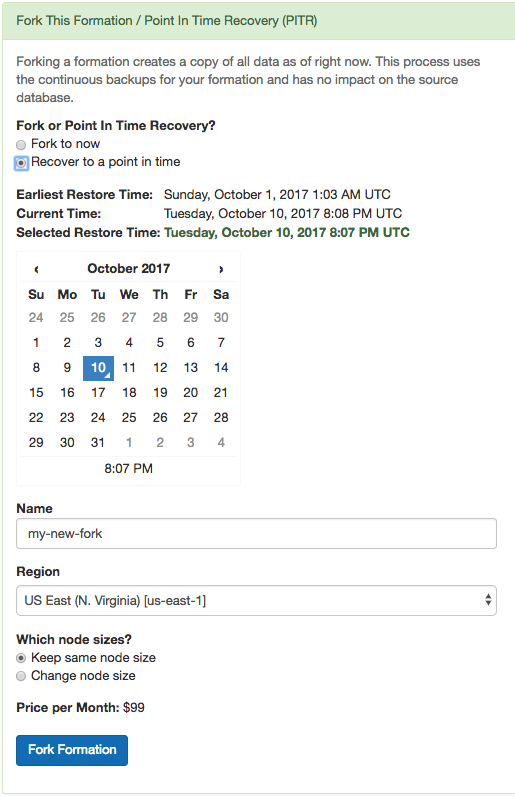Backup, Availability, and Replication¶
In the real world, insurance is used to manage risk when a natural disaster such as a hurricane or flood strikes. In the database world, there are two critical methods of insurance. High Availability (HA) replicates the latest database version virtually instantly. Disaster Recovery (DR) offers continuous protection by saving every database change, allowing database restoration to any point in time.
High availability and disaster recovery are both forms of data backups that are mutually exclusive and inter-related. The difference between them is that HA has a secondary reader database replica (often referred to as stand-by or follower) ready to take over at any moment, but DR just writes to cold storage (in the case of Amazon that’s S3) and has latency in the time for the main database to recover data.
Citus Cloud continuously protects the cluster data against hardware failure. To do this we perform backups every twenty-four hours, then stream the write-ahead log (WAL) from PostgreSQL to S3 every 16 MB or 60 seconds, whichever is less. Even without high availability enabled you won’t lose any data. In the event of a complete infrastructure failure we’ll restore your back-up and replay the WAL to the exact moment before your system crashed.
High-Availability (HA) Replication¶
In addition to continuous protection which is explained above, high availability is available if your application requires less exposure to downtime. We provision stand-bys if you select high availability at provisioning time. This can be for your primary node, or for your distributed nodes.

For HA, any data that is written to a primary database called the Writer is instantly replicated onto a secondary database called the Reader in real-time, through a stream called a WAL or Write-Ahead-Log.
To ensure HA is functioning properly, Citus Cloud runs health checks every 30 seconds. If the primary fails and data can’t be accessed after six consecutive attempts, a failover is initiated. This means the primary node will be replaced by the standby node and a new standby will be created.
Disaster Recovery (DR)¶

For DR, read-only data is replayed from colder storage. On AWS this is from S3, and for Postgres this is downloaded in 16 MB pieces. On Citus Cloud this happens via WAL-E, using precisely the same procedure as creating a new standby for HA. WAL-E is an open source tool initially developed by our team, for archiving PostgreSQL WAL (Write Ahead Log) files quickly, continuously and with a low operational burden.
This means we can restore your database by fetching the base backup and replaying all of the WAL files on a fresh install in the event of hardware failure, data corruption or other failure modes.
On Citus Cloud prior to kicking off the DR recovery process, the AWS EC2 instance is automatically restarted. This process usually takes 7±2 minutes. If it restarts without any issues, the setup remains the same. If the EC2 instance fails to restart, a new instance is created. This happens at a rate of at least 30MB/second, so 512GB of data would take around 5 hours.
Comparison of HA and DR¶
While some may be familiar many are not acutely aware of the relationship between HA and DR.
Although it’s technically possible to have one without the other, they are unified in that the HA streaming replication and DR archiving transmit the same bytes.
For HA the primary “writer” database replicates data through streaming replication to the secondary “reader” database. For DR, the same data is read from S3. In both cases, the “reader” database downloads the WAL and applies it incrementally.
Since DR and HA gets regularly used for upgrades and side-grades, the DR system is maintained with care. We ourselves rely on it for releasing new production features.
Disaster Recovery takes a little extra work but gives greater reliability¶
You might think that if HA provides virtually instant backup reliability, so ‘Why bother with DR?’ There are some compelling reasons to use DR in conjunction with HA including cost, reliability and control.
From a cost efficiency perspective, since HA based on EBS and EC2 is a mirrored database, you have to pay for every layer of redundancy added. However, DR archives in S3 are often 10-30% of the monthly cost of a database instance. And with Citus Cloud the S3 cost is already covered for you in the standard price of your cluster.
From reliability perspective, S3 has proven to be up to a thousand times more reliable than EBS and EC2, though a more reasonable range is ten to a hundred times. S3 archives also have the advantage of immediate restoration, even while teams try to figure out what’s going on. Conversely, sometimes EBS volume availability can be down for hours, leaving uncertainty on whether it will completely restore.
From a control perspective, using DR means a standby database can be created while reducing the impact on the primary database. It also has the capability of being able to recover a database from a previous version.
Trade-offs between latency and reliability for backups¶
There is a long history of trade-offs between latency and reliability, dating back to when the gold standard for backups were on spools of tape.
Writing data to and then reading data from S3 offers latencies that are 100 to 1,000 times longer than streaming bytes between two computers as seen in streaming replication. However, S3’s availability and durability are both in excess of ten times better than an EBS volume.
On the other hand, the throughput of S3 is excellent: with parallelism, and without downstream bottlenecks, one can achieve multi-gigabit throughput in backup and WAL reading and writing.
How High Availability and Disaster Recovery is used for crash recovery¶
When many customers entrust your company with their data, it is your duty to keep it safe under all circumstances. So when the most severe database crashes strike, you need to be ready to recover.
Our team is battle-hardened from years of experience as the original Heroku Postgres team, managing over 1.5 million databases. Running at that scale with constant risks of failure, meant that it was important to automate recovery processes.
Such crashes are a nightmare. But crash recovery is a way to make sure you sleep well at night by making sure none of your or your customers data is lost and your downtime is minimal.
Point-in-Time Recovery¶
While Forking means making a copy of the database at the current moment, point-in-time recovery (PITR) means making a copy from a specific moment in the past. PITR acts as a time machine, allowing simple restoration from even the most severe data loss.
Suppose a customer deletes a record stored in your Citus cluster and you want to recover it, or an engineer drops a table by accident. Just navigate to the “Fork / PITR” tab in the Citus Cloud console and select the “Recover to a point in time” option:

Similar to forking, PITR creates a copy of your formation and leaves the original unaffected. It uses the same operations internally as forking does: base backups and WAL shipping. This means that performing PITR causes no extra load on the original database.
Citus Cloud stores base backups and WAL records for up to ten days, which limits the recovery period to that amount of time. The user interface will prevent you from going back further, and will show the earliest possible recovery time.
Note that Citus worker nodes have different base backup timings and sizes, so it can happen that one node restores faster than another. In general the recovery process begins with restoring base backups at roughly 30MB/second. When that is complete the Cloud Console will provide a progress meter as it replays transactions from the WAL. The length of time for this stage varies by the number of transactions that must be replayed.